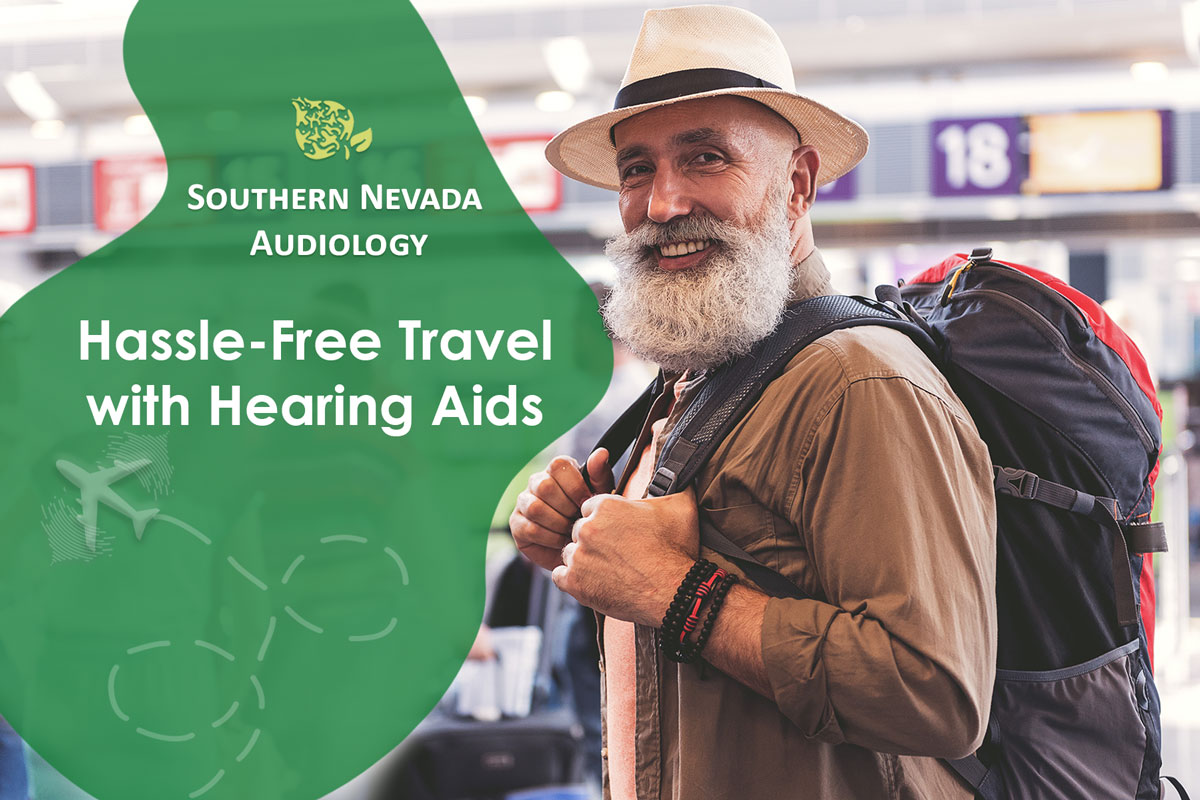No matter where you travel around the world, protecting your hearing is essential. Traveling exposes you to various auditory hazards, from the loud roar of airplane engines to the risk of ear infections. Additionally, if you wear hearing aids, managing them while on the go can be a bit challenging. In this article, we will provide valuable insights to help travelers minimize potential hearing-related risks and optimize the use of their hearing aids during their adventures.
Common Hearing Risks Associated with Traveling
Traveling is undoubtedly an enriching experience, but it should not come at the expense of your hearing health. There are numerous risks that travelers should be mindful of. First and foremost, air travel poses particular challenges. Despite advancements in aviation technology, airplanes remain notably noisy environments. Passengers may endure noise levels ranging from 80 to 100 decibels for flights lasting up to 10 hours. To put this in perspective, the National Institute for Occupational Health recommends a maximum exposure of four hours to sounds exceeding 88 decibels.
Numerous flights exceed this limit, thereby exposing travelers to the potential for enduring hearing issues. Furthermore, there are other issues to contend with, such as tinnitus due to changes in air pressure or the necessity to raise headphone volumes to counteract cabin noise.
These factors can collectively contribute to an unpleasant experience for anyone’s ears. Moreover, hearing-related risks persist even after reaching your destination, whether it be Hawaii or Miami. A refreshing swim can result in otitis externa (swimmer’s ear), caused by waterborne bacteria. Additionally, the noise generated by trains can present a hazard to your hearing, especially within subway systems where sound can be magnified. Fortunately, there are effective measures we can take to mitigate these auditory dangers. Utilizing earplugs during flights and train journeys, ensuring thorough ear drying after swimming, and using noise-canceling headphones to prevent excessive volume adjustments are strategies that enable us to enjoy our travels while protecting our hearing.
Guide to Using Your Hearing Aid During Air Travel
Individuals who rely on hearing aids should take special precautions when embarking on plane journeys. Let’s begin with the positive news: hearing aids do not fall under the standard regulations governing electronic devices like phones or laptops, allowing you to use them without any restrictions during take-off and landing. However, if your hearing aid features an FM receiver, it’s advisable to disable it during critical phases, as it can potentially interfere with airplane systems in a manner similar to mobile phone signals.
Beyond this, it is essential to keep your hearing aid in place while on board and to tune in to the safety instructions provided by the airline. Utilize any noise reduction functions that your device offers to eliminate engine noise and adjust the volume appropriately during the safety briefing. Most airlines provide informational leaflets outlining safety protocols as well, so take the time to review them thoroughly to ensure you do not miss any vital details. Following this, you can unwind and enjoy your journey. If you wish to watch a movie, you can remove your hearing aid temporarily, but remember to secure it in your cabin baggage rather than leaving it in the seat pocket. This precaution ensures that you won’t inadvertently leave it behind when your flight concludes.
Valuable Advice for Traveling with Hearing Aids
Traveling with hearing aids can present challenges, but with some thoughtful preparation and handy tips, you can make your journey much smoother.
First and foremost, make the most of the assistance provided by cabin crew and ground staff. They are trained to assist individuals with hearing loss and are more than willing to communicate directly with you, offering any necessary support or guidance. It’s also important to ensure your hearing aids are fully charged. Bring a spare battery or your charger along, and remember to charge your devices overnight. If you’re traveling to a hot climate, consider packing a dehumidifier to help remove moisture from your hearing aids. Proper storage is another essential consideration. Invest in a dedicated bag for your hearing aids and accessories, preferably one that you can wear comfortably.
In addition to these tips, consider using accessories that can enhance your travel experience. Surprisingly, few travelers bring vibrating alarms to wake them in the morning, which can be incredibly useful. Lastly, when visiting attractions such as museums or galleries, inquire about the availability of induction loop assistance. Many renowned attractions offer guides and resources for those with hearing difficulties, significantly enhancing your overall travel experience. Don’t miss out on these opportunities to make the most of your journey.
Preserve Your Hearing for a More Enjoyable Vacation Experience
Vacations are meant to be enjoyable, but they can pose challenges for individuals with hearing impairments. Losing your hearing aid, experiencing a battery drain during a lengthy flight, or developing swimmer’s ear at the start of a beach getaway can certainly be frustrating. Nonetheless, there are effective strategies to address every hearing-related issue during your holiday. By ensuring the proper use of your hearing aid, proactive planning, and taking care of your hearing while away from home, you can simplify your travel experience, allowing you to fully immerse yourself in the joys of your trip.
Please schedule your hearing assessment / checkup with Southern Nevada Audiology today! Learn more about the advancements in modern hearing aids.

